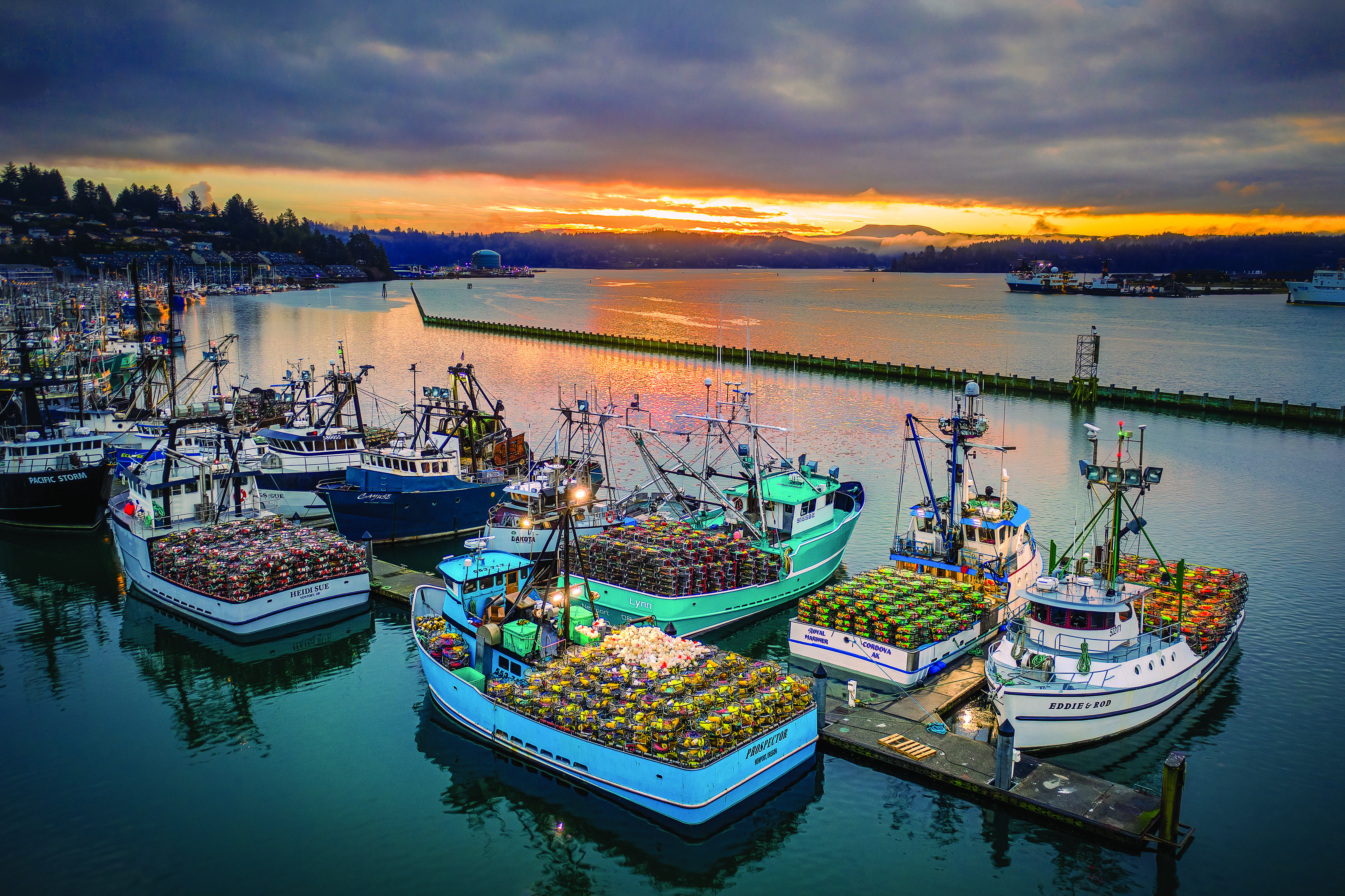It can happen in any port: Fishing boats geared up and ready to go end up sitting at the dock waiting for the start of the season, whether it’s been called or not.
In January, many vessels participating in the West Coast commercial Dungeness crab fishery were tied to the dock while the fleet negotiated a price. Many of these vessels had their gear onboard for an extended period of time, since the fishery was slated to open in mid-December after a delay for whale migration. They then held back when domoic acid reared its ugly head along part of the coast and a price negotiation, further postponing the fishery well into January in the northern part of Oregon and most of Washington. In other years, the fleet has been called to stand down while crab meat fill achieves a market standard.
Unfortunately, even when a boat is sitting at the dock a valve can fail, a pump can quit operating, or the EPIRB may stop operating. We offer these checklists to jump start a thorough self-inspection of your vessel, your safety equipment and your crew’s readiness as you prepare to embark on upcoming trips, especially after any kind of extended delay.
Vessel
• Bilge pumps, pumps for fish holds and especially for those vessels with live wells;
• All of your alarm systems;
• Deck or engine room cameras;
• PA/intercom/other communication systems between the deck and wheelhouse; and
- Lights — running, deck, crab, safety, etc.
- Verify the date of your last Coast Guard safety inspection to ensure the sticker hasn’t expired.
- If you can access below-deck compartments:
Make sure you haven’t accumulated water in any voids.
Ensure all shafts and bearings are greased
Check hoses for abrasions or cracks – and ensure hose clamps are secure
- Confirm that all gear is properly secured. Even the slightest easing of tension in your stack can have dire consequences.
- Check fittings, connectors, etc.
Safety equipment
- All lifesaving equipment is where it should be and isn’t expired.
- Raft is installed properly and EPIRB is tested.
- All flashlights and working and have extra batteries.
Crew readiness
• Perform safety drills before you leave the dock.
- Make sure each crew member knows where the following are located and how each is used: life ring(s), fire extinguishers, escape routes, PFDs, survival suits, life slings or other devices used to pull people out of the water, flares, first aid kit, knives, radios, GPS, and any other lifesaving and emergency equipment onboard.
- Clearly communicate and walk through your abandon-vessel procedures.
- Consider adequate head protection to protect each crew member from flying buoys, swinging hooks, falling pots from the top of the stack, and the unforeseeable items that could come into contact with your head. There are a number of options that would seem ideal for the commercial fishing industry — FirstWatch Gear, based on California is one such option.
- Ensure each crew member can quickly put on a survival suit; and if your vessel requires use of a PFD while on deck, as we hope it does, make sure that is clearly communicated and understood.
In November, Chris Woodley — former chair of the Commercial Fishing Vessel Safety Advisory Committee — wrote in this column about the virtues of PFDs to safeguard against fatalities associated with falls overboard. Citing NIOSH, Woodley indicated that, “220 commercial fishermen died after falling overboard from 2000 to 2016.” He also indicated that 30 percent of industry fatalities come from falls overboard. If one of those fishermen had been wearing a PFD, and was subsequently rescued, their family would have avoided the unimaginable grief of losing a spouse, parent or child.
This list is not meant to be exhaustive. You know your vessel and crew far better than we do. We hope this will serve as a prompt, and also generate conversations that will prepare you to ensure a safe return for all of you and your crews. Above all else, please use good judgment. If a particular action seems risky, there is no shame in waiting for safer conditions. The Coast Guard has a web-based app that can generate a more thorough checklist to help you prepare for a dockside exam. This can be used as a guide when undertaking the preparations described above.
We are depending on you to provide all of us with a sustainable source of protein. We hope all of you will be with your families at season’s end.
Mike Conroy is a commercial fisherman and the executive director of the Pacific Coast Federation of Fishermen’s Associations.
Bob Dooley is a retired commercial fisherman, a member of the Pacific Fishery Management Council, a founding member of the United Catcher Boats, and a National Fisherman Highliner.







